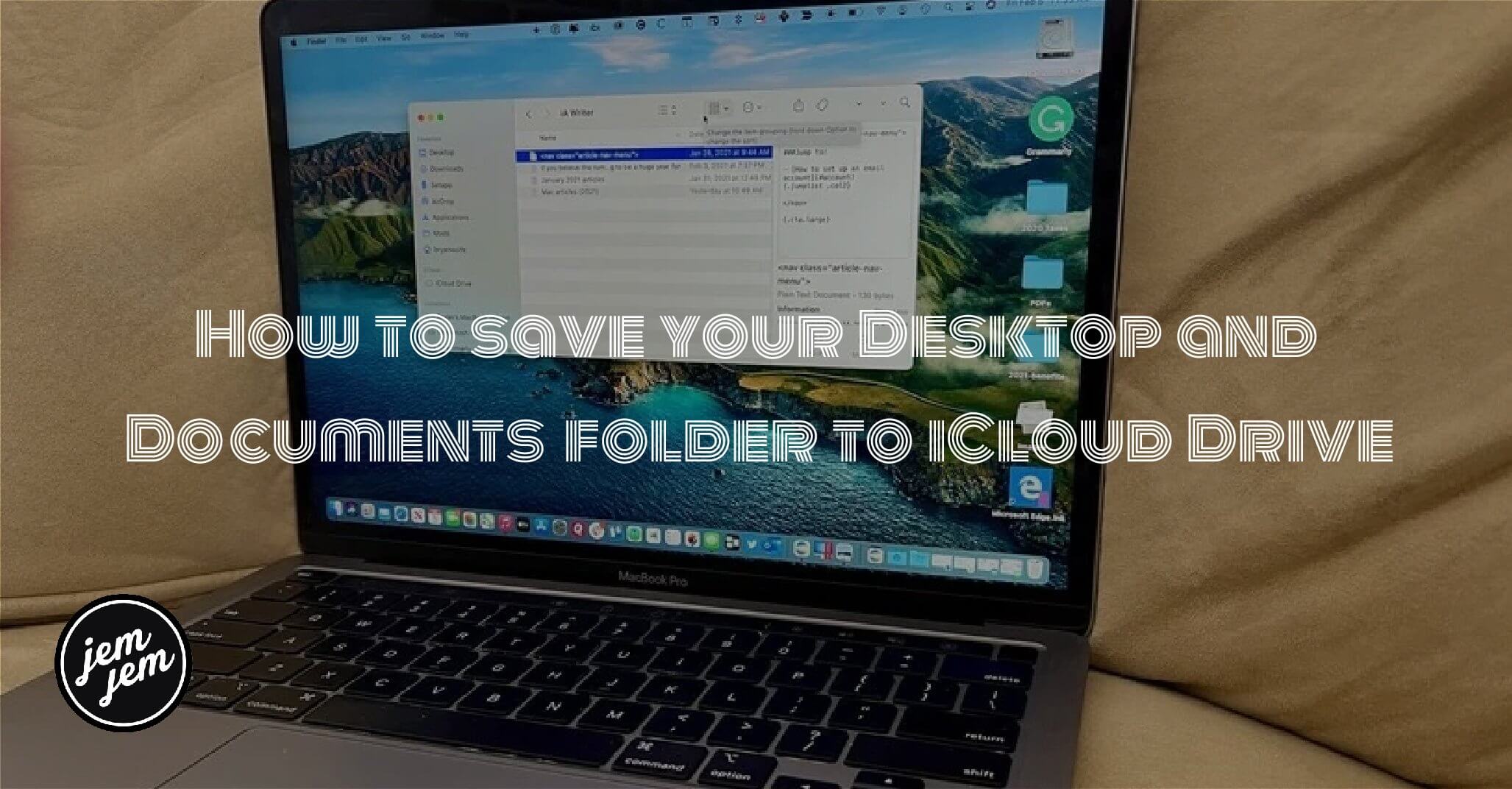You can access your Mac's Desktop and Documents folder in iCloud right on your iPhone or iPad. Here's how.

As part of an effort to help you save space on your computer while keeping you connected to everything important to you, Macs support Desktop & Documents Folders syncing in iCloud Drive.
With Desktop & Documents Folders iCloud Drive syncing enabled, every photo, file, and folder you save to your desktop will automatically save in iCloud. You can access it from your iPhone, iPad, another Mac, and even a Windows-based PC via iCloud Drive, the Files app, or iCloud.com.
It also means that every file, folder, or document that is usually stored in your Mac's Documents folder will also automatically save in iCloud.
No matter where you are or what you do, your most important files can be stored in the cloud, making it possible for you to access them from anywhere.
Are you looking for a new laptop? Check out our list of the best MacBooks of the year.
How to manually add Desktop and Documents Folders to iCloud on Mac
If you didn't enable Desktop & Documents Folders syncing in iCloud when you first set up your Mac but later decided you wanted to use the feature, you could still add them to iCloud storage manually.
- Launch System Preferences on your Mac.
- Select Apple ID in the upper right corner.
-
Click the Options button next to iCloud Drive.
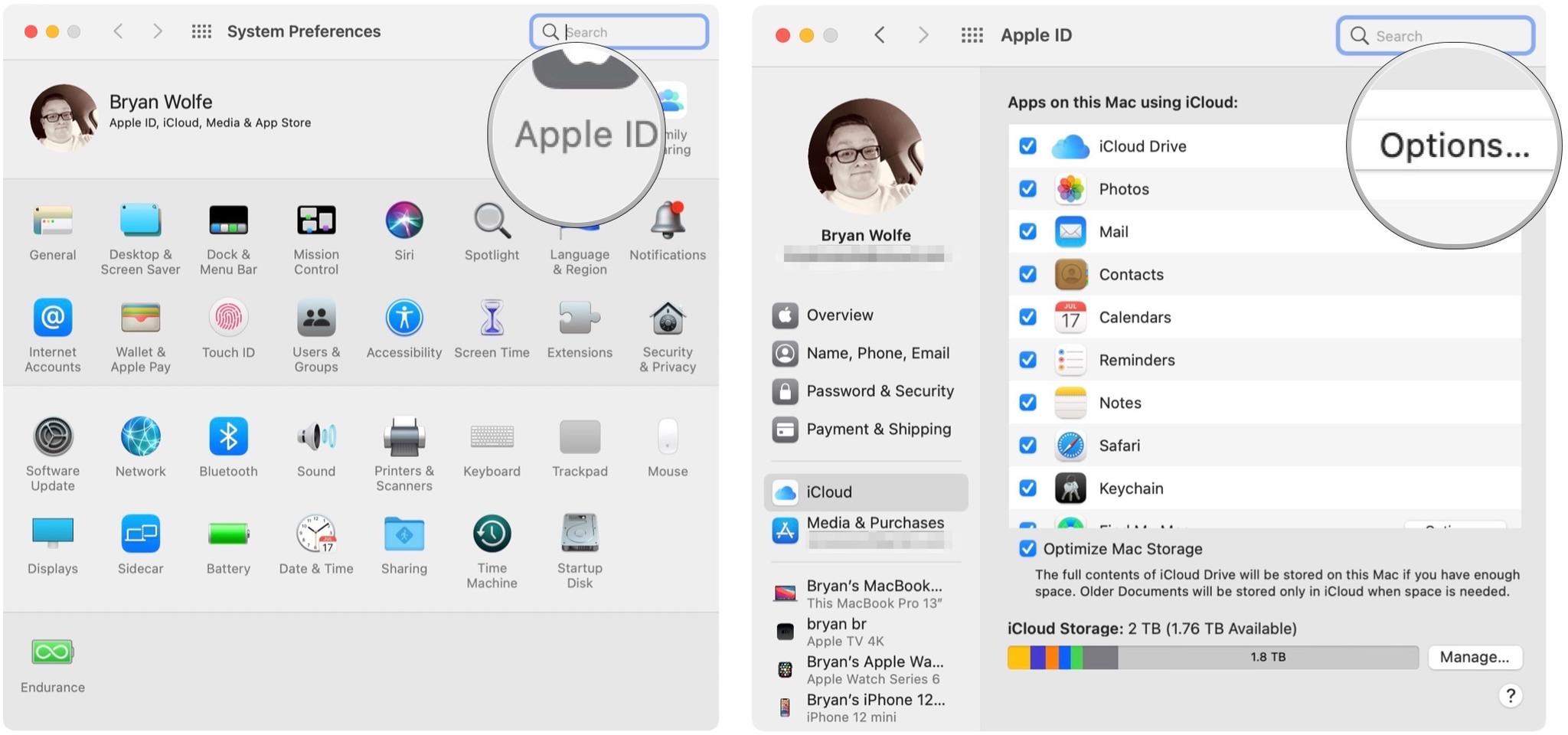
- Check off the box for Desktop and Document Folders.
-
Click Done in the bottom right corner of the window.
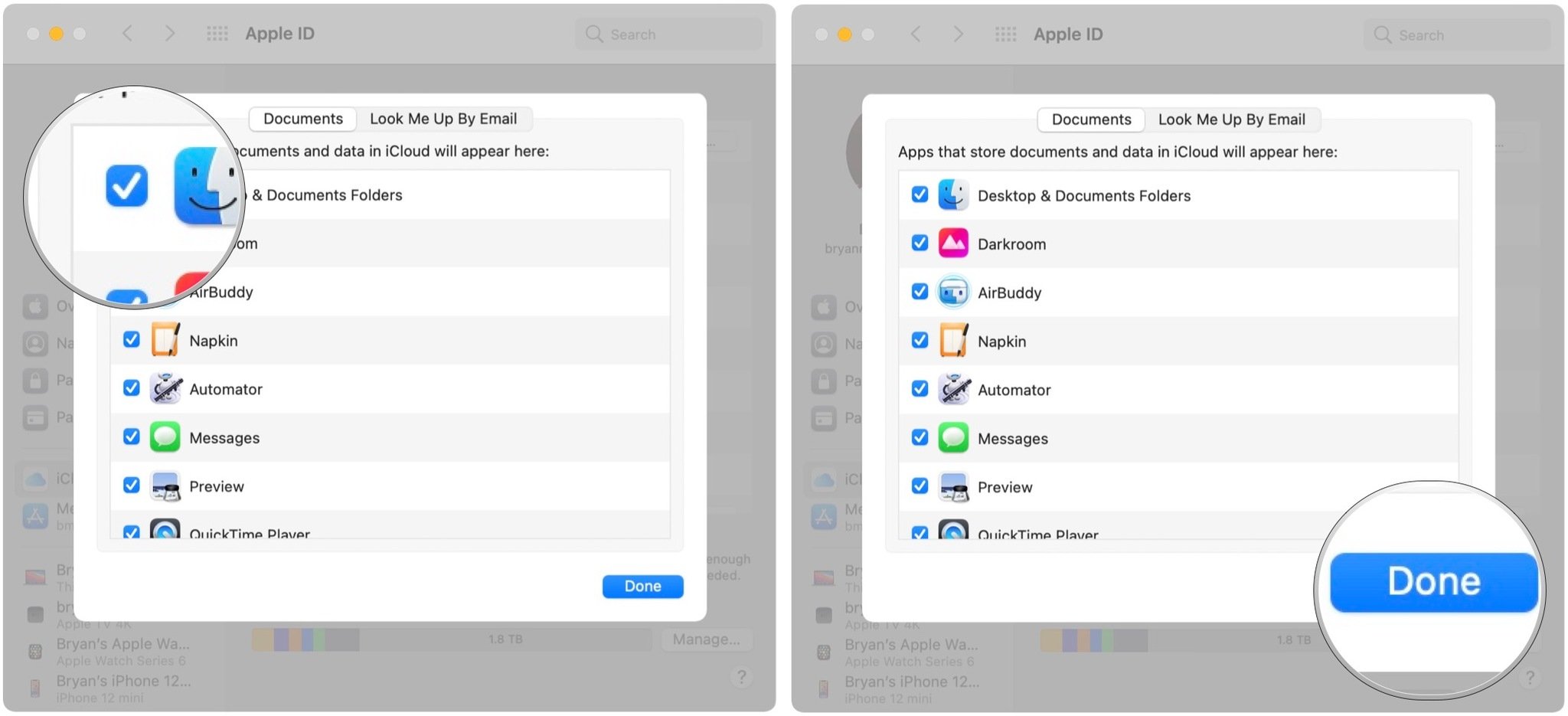
Your files and folders will be added to iCloud, where you can access them from your iPhone or iPad using the Files app, another Mac, or even a PC via iCloud Drive or iCloud.com.
How to access your Desktop and Documents Folder on iPhone and iPad in the Files app
Once your desktop and Documents folders are stored in iCloud, you can access and even edit them on your iPhone or iPad.
- Open the Files app on your iPhone or iPad.
- Tap iCloud Drive.
-
Choose the Desktop or Documents folder, then the file you want to open.
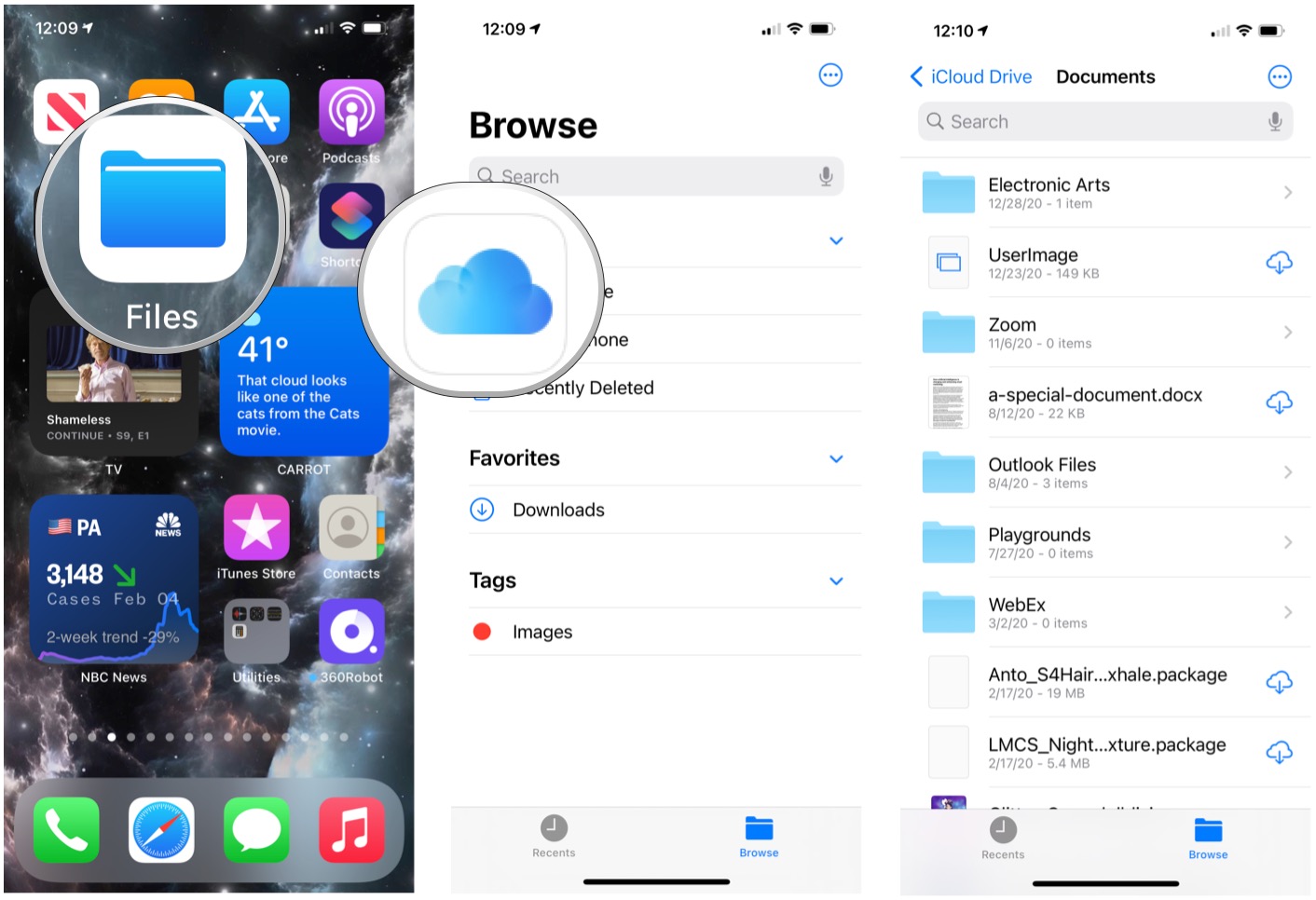
You can even edit some documents right inside the Files app without having to open another app.
How to remove desktop files from iCloud Drive
Whenever you move a file from your desktop to another place on your Mac, like a folder stored in your computer or Dropbox, it will be moved to the new location and deleted from iCloud Drive. It will no longer be accessible from your other devices.
All you have to do is drag-and-drop it from your desktop into a new, non-iCloud location. You will see a pop-up asking you to confirm the changes. Click move to continue.
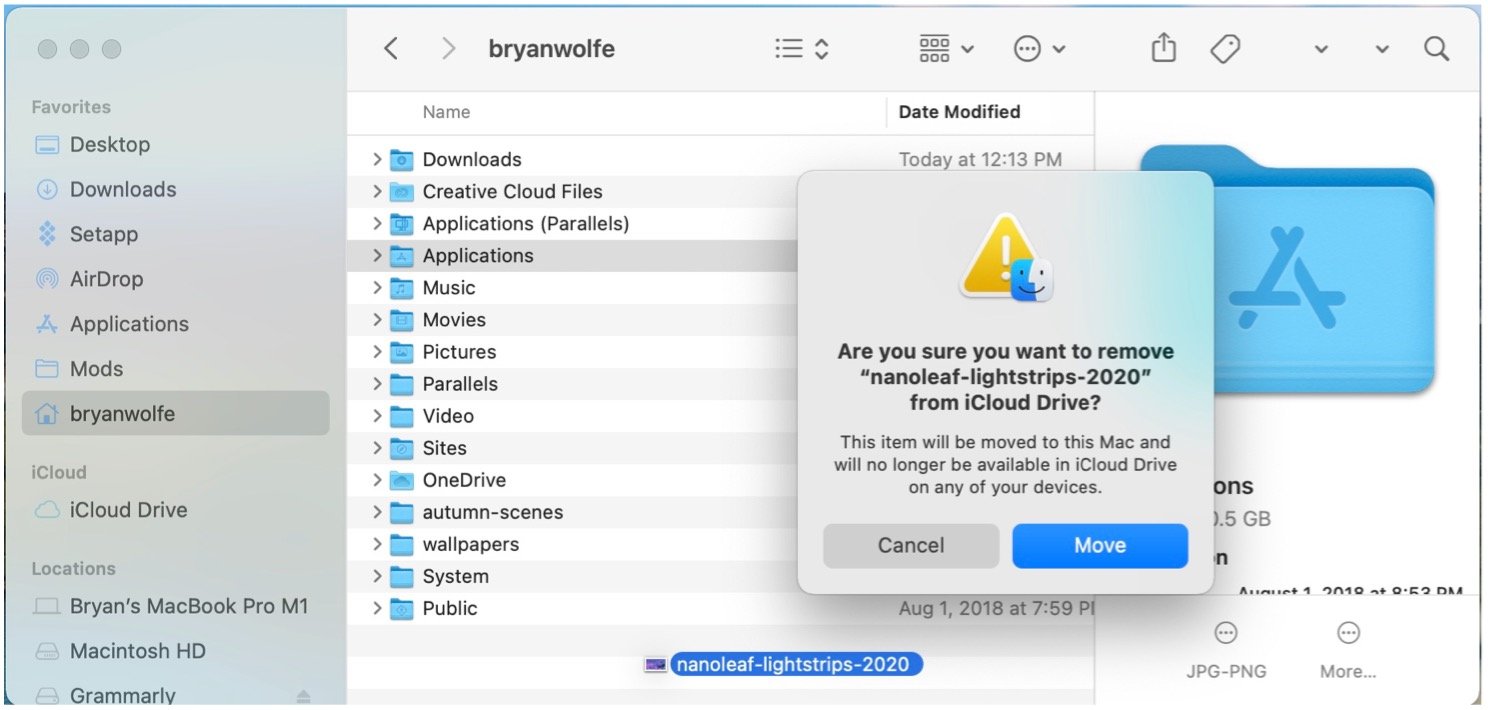
How to stop syncing Desktop and Documents folders to iCloud Drive on your Mac
If you decide that syncing your desktop and Documents folder is not for you, you can always revert to the old way by disabling the syncing feature.
- Launch System Preferences on your Mac.
- Select Apple ID in the upper right corner.
-
Click the Options button next to iCloud Drive.

- Check off the box for Desktop and Document Folders.
- Choose Turn Off in the pop-up box.
-
Select Done in the bottom right corner of the window.
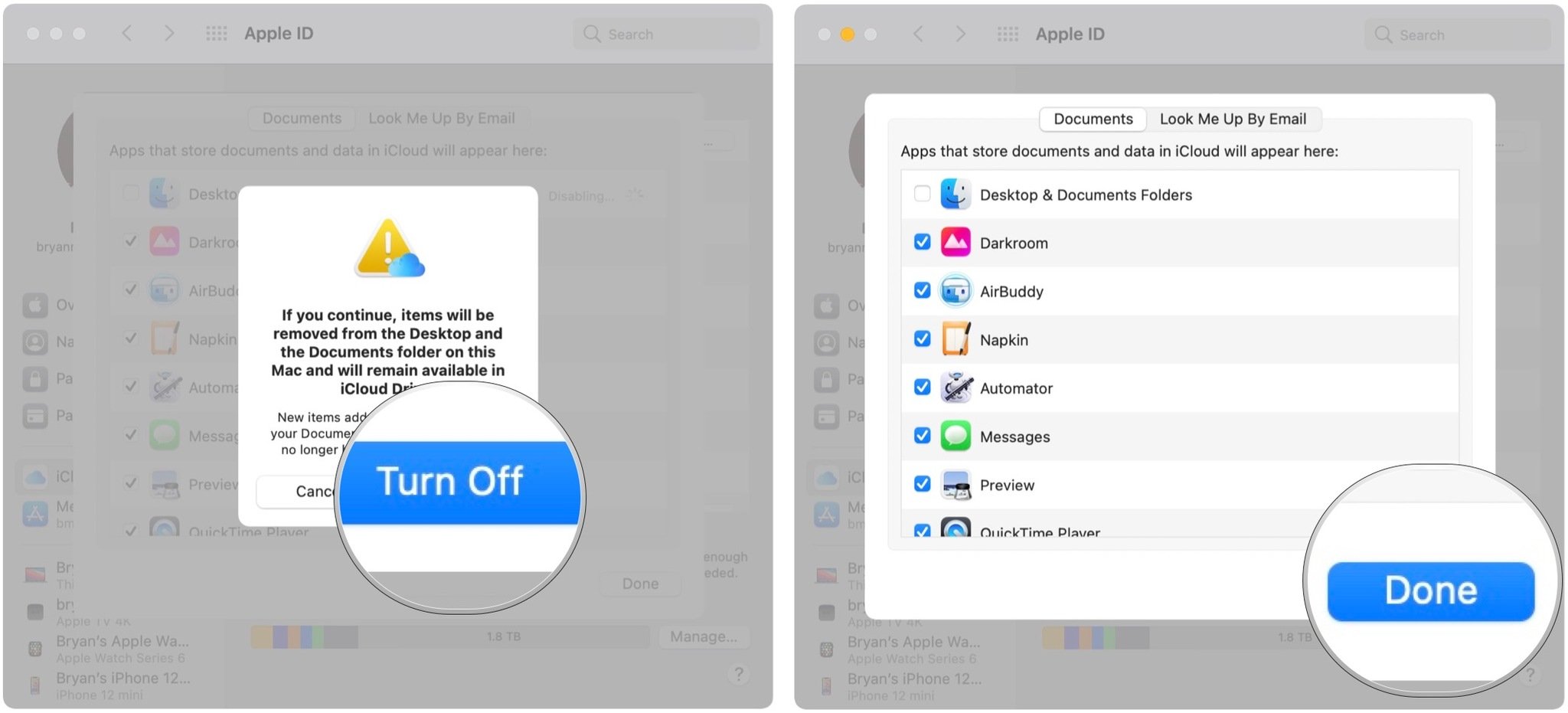
Keep in mind that disabling Desktop & Documents syncing with iCloud doesn't mean that your files will automatically move back to their original locations. They will remain available in your iCloud Drive in the Documents and Desktop folders. You'll have to manually move the contents back to your Mac's local disk from iCloud to revert to the way things were before turning on Desktop & Documents syncing.
Buy used, save big
jemjem makes it safe and easy to save money buying gently used technology for home and family.

